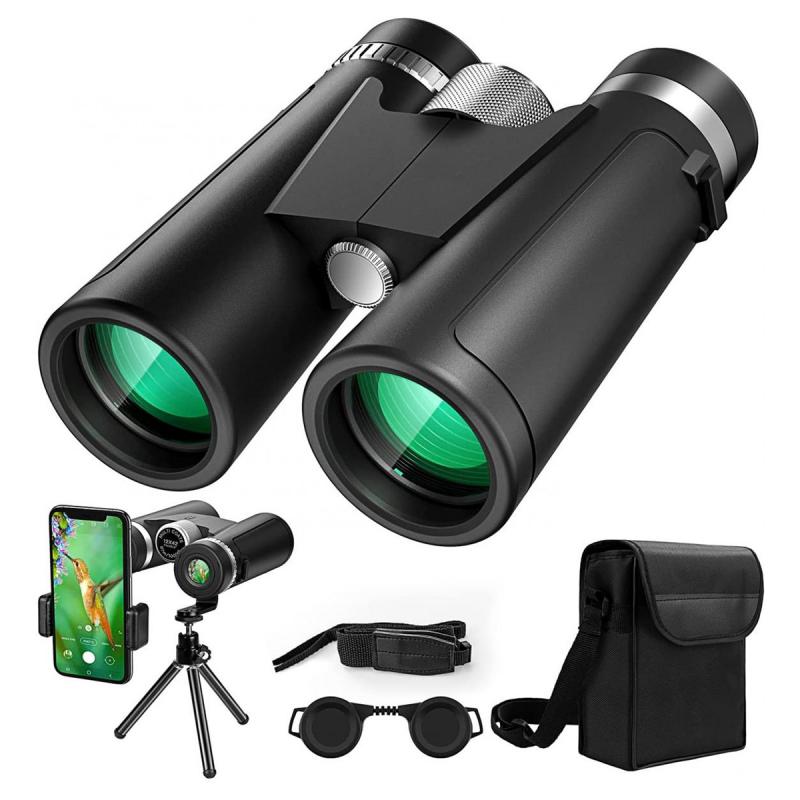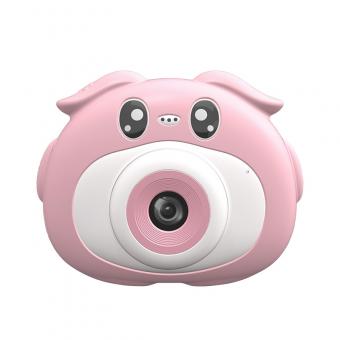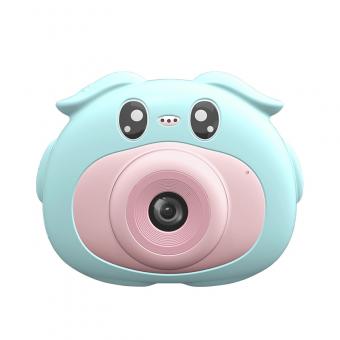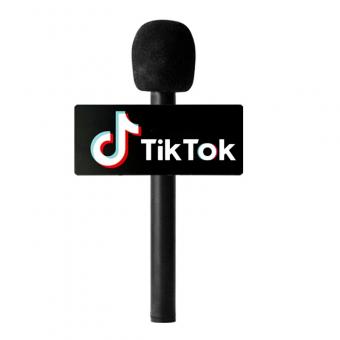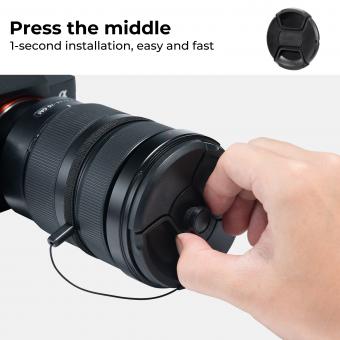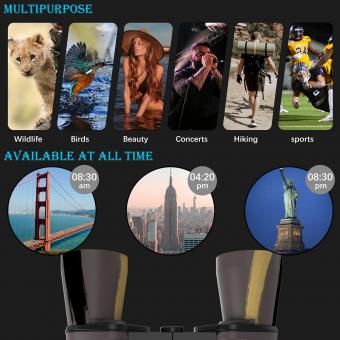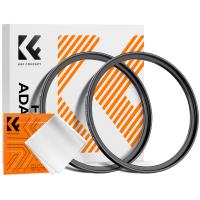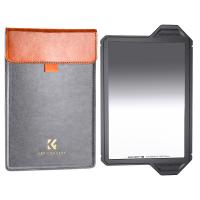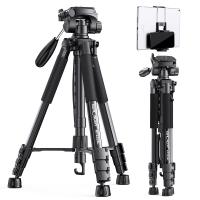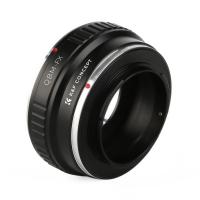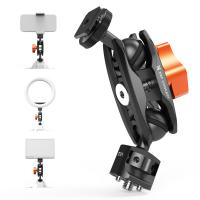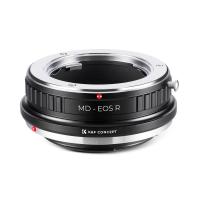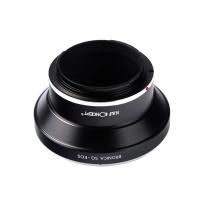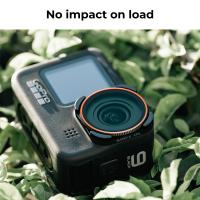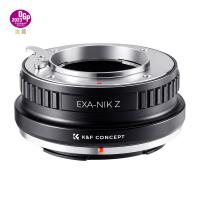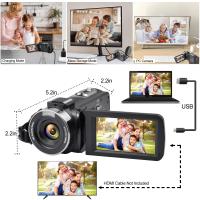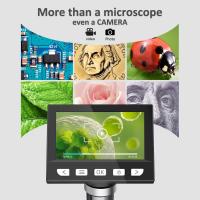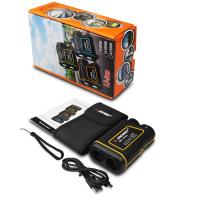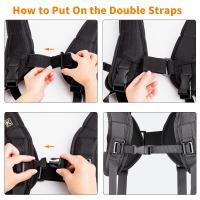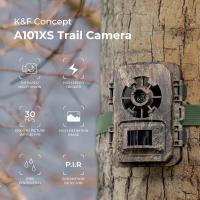How To Buy Good Binoculars ?
To buy good binoculars, it is important to consider the following factors:
1. Magnification: Choose binoculars with a magnification that suits your needs. Higher magnification means a closer view, but it also means a narrower field of view and shakier image.
2. Objective lens diameter: The larger the objective lens diameter, the brighter the image. However, larger lenses also mean heavier and bulkier binoculars.
3. Prism type: Choose binoculars with roof prisms for a more compact design and better image quality, or porro prisms for a wider field of view.
4. Coatings: Look for binoculars with fully multi-coated lenses for better light transmission and image clarity.
5. Eye relief: If you wear glasses, choose binoculars with long eye relief to avoid eye strain.
6. Build quality: Look for binoculars with a sturdy and waterproof design for durability and protection against the elements.
7. Price: Set a budget and choose binoculars that offer the best value for your money.
By considering these factors, you can find binoculars that suit your needs and provide a clear and enjoyable viewing experience.
1、 Magnification and Objective Lens Diameter
How to buy good binoculars? There are several factors to consider, but two of the most important are magnification and objective lens diameter.
Magnification refers to how much closer an object appears when viewed through the binoculars. A higher magnification may seem appealing, but it can also make the image shakier and harder to focus. For most purposes, a magnification of 8x or 10x is sufficient. However, if you plan to use your binoculars for stargazing or other long-distance viewing, a higher magnification may be necessary.
Objective lens diameter refers to the size of the front lenses of the binoculars. A larger diameter allows more light to enter the binoculars, resulting in a brighter and clearer image. However, larger lenses also mean heavier and bulkier binoculars. For general use, a diameter of 30-40mm is sufficient. For low-light conditions or more specialized uses, a diameter of 50mm or more may be necessary.
It's also important to consider the quality of the optics, the durability of the binoculars, and any additional features such as waterproofing or image stabilization. Reading reviews and doing research before making a purchase can help ensure that you get the best binoculars for your needs.
In recent years, there has been a trend towards compact and lightweight binoculars, which are easier to carry and use for extended periods of time. Additionally, many binoculars now come with smartphone adapters, allowing you to take photos and videos through the binoculars.
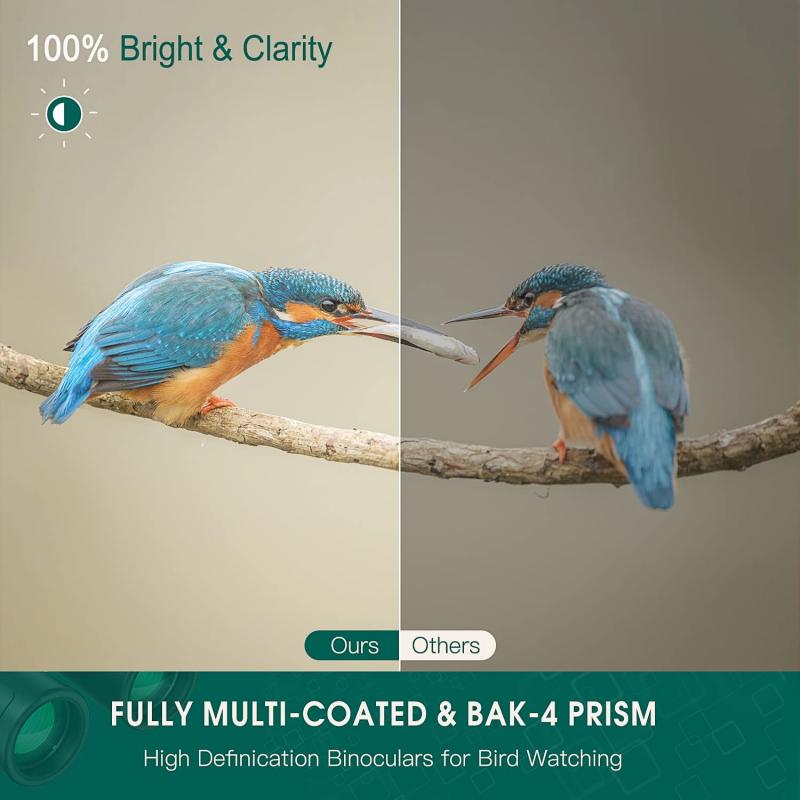
2、 Prism Type
How to buy good binoculars - Prism Type:
When it comes to buying binoculars, one of the most important factors to consider is the prism type. There are two main types of prisms used in binoculars: roof prisms and porro prisms. Each has its own advantages and disadvantages, so it's important to understand the differences before making a purchase.
Roof prisms are more compact and lightweight, making them a popular choice for outdoor enthusiasts who need to carry their binoculars with them. They also tend to be more durable and waterproof, making them a good choice for use in harsh environments. However, they can be more expensive than porro prism binoculars.
Porro prisms, on the other hand, tend to offer better image quality and a wider field of view. They are also generally less expensive than roof prism binoculars. However, they are bulkier and heavier, which can make them less convenient to carry around.
When choosing between roof and porro prism binoculars, it's important to consider your specific needs and preferences. If you need a compact and durable pair of binoculars for outdoor activities, roof prisms may be the best choice. If image quality and a wider field of view are more important to you, porro prisms may be the way to go.
It's also worth noting that there are some newer prism types, such as Abbe-Koenig and Schmidt-Pechan prisms, that offer some of the advantages of both roof and porro prisms. However, these binoculars tend to be more expensive and may not be necessary for most users.
In summary, when buying binoculars, it's important to consider the prism type and how it will affect the performance and convenience of the binoculars for your specific needs.
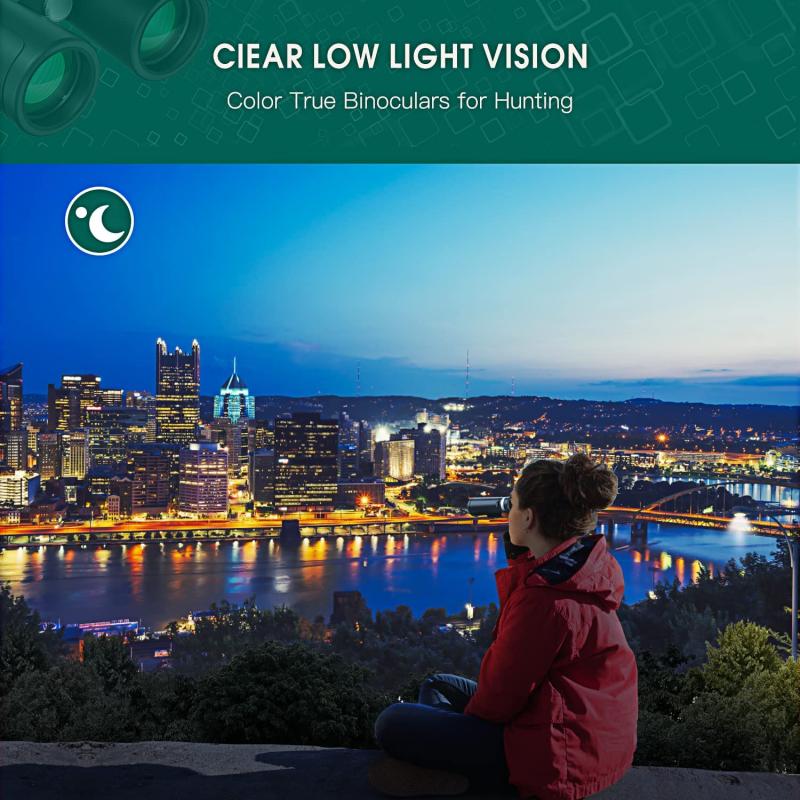
3、 Coatings and Image Quality
When it comes to buying good binoculars, one of the most important factors to consider is the coatings and image quality. The coatings on the lenses can greatly affect the clarity and brightness of the image you see through the binoculars. Look for binoculars with fully multi-coated lenses, which means that all air-to-glass surfaces have multiple layers of anti-reflective coatings. This will ensure that you get the brightest and clearest image possible.
Another important factor to consider is the image quality. Look for binoculars with high-quality prisms, such as roof prisms or Schmidt-Pechan prisms, which will provide a clear and sharp image. The magnification and objective lens size will also affect the image quality, so choose a magnification that suits your needs and a larger objective lens size for brighter images.
In recent years, there has been a trend towards using ED (extra-low dispersion) glass in binoculars. This type of glass helps to reduce chromatic aberration, which can cause color fringing and reduce image sharpness. Binoculars with ED glass can provide a clearer and more vibrant image.
Overall, when buying binoculars, it's important to consider the coatings and image quality to ensure that you get the best possible viewing experience. Look for fully multi-coated lenses, high-quality prisms, and consider the use of ED glass for even better image quality.
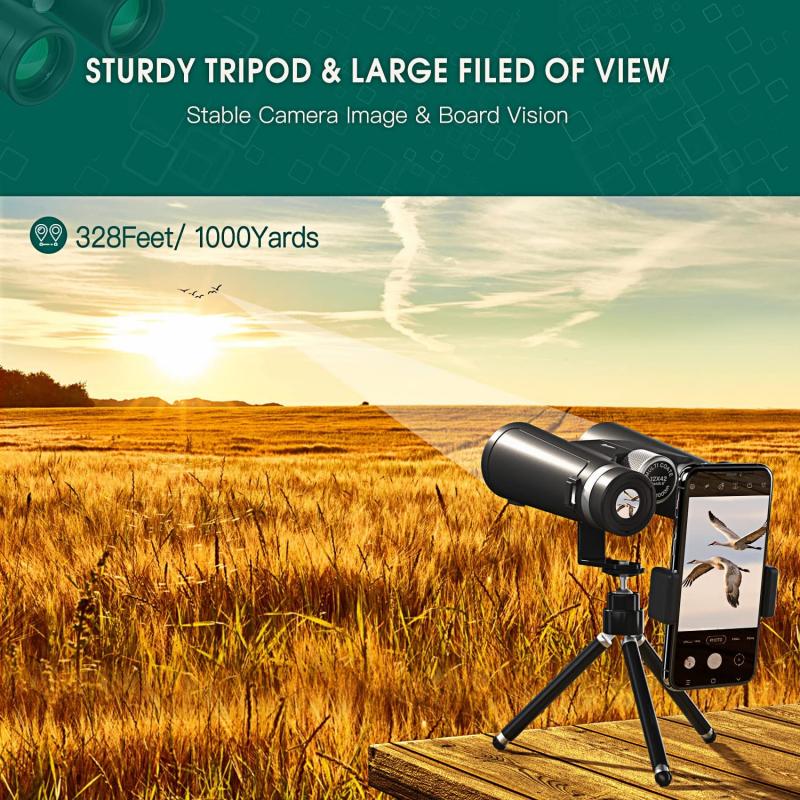
4、 Field of View
How to buy good binoculars? One important factor to consider is the field of view. The field of view refers to the width of the area that can be seen through the binoculars. A wider field of view allows you to see more of your surroundings, making it easier to track moving objects or scan a large area.
When shopping for binoculars, look for models with a field of view of at least 300 feet at 1000 yards. However, keep in mind that a wider field of view may come at the expense of image quality, so it's important to find a balance that works for your needs.
Another consideration is the type of prism used in the binoculars. Roof prisms tend to offer a narrower field of view than porro prisms, but they are more compact and easier to handle. Porro prisms, on the other hand, tend to offer a wider field of view and better depth perception, but they are bulkier and may be more difficult to hold steady.
It's also worth noting that some newer models of binoculars feature image stabilization technology, which can help compensate for shaky hands and provide a more stable image. However, these models tend to be more expensive than traditional binoculars.
Ultimately, the best way to find the right binoculars for your needs is to try out different models and see which ones feel comfortable and provide the level of performance you require.
